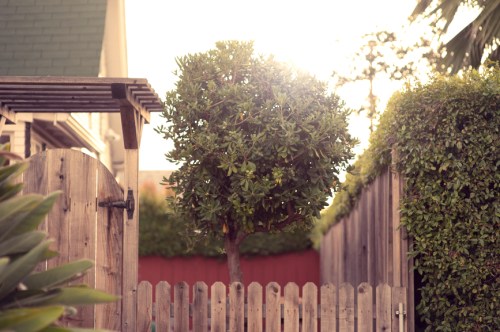While there may be some distinctions between regions, there are a few general rules when it comes to learning how to care for trees.
Experts in This Article
Lisa Tadewaldt is an arborist certified by the International Society of Arboriculture and co-founder of Urban Forest Pro, a tree care company based in Portland, Oregon.
“As an example, in the Pacific Northwest, we have different trends in weather and our climate is quite different from say, Colorado or Virginia, so this will change depending on your specific needs,” says Lisa Tadewaldt, an arborist certified by the International Society of Arboriculture and co-founder of Urban Forest Pro, a tree care company based in Portland, Oregon.
Even if the degree to which these effects can happen (due to extremes in temperatures per region), the seasonal patterns are also pretty universal. Here is a good guide to caring for your trees year round, broken down by seasons.
How to care for trees in each season
1. Summer
“Our summers get warm and much of the Western States experience droughts, so watering in the summer can be really important,” says Tadewaldt. You’ll likely need to water once per week but take note of overwatering signs.
“A big one is pooling that doesn’t absorb too quickly in the ground, which means you’ve achieved a wetted soil depth of anywhere from 18-24 inches, which is good,” she says. It’s best to water early in the morning or late into the night to avoid evaporation in the hot daytime hours too.
2. Autumn
Take a look at your trees in fall and see if any look like they could be susceptible to an accident in the coming weeks or months. “If you have a limb you think is compromised and could come down in a heavy snowstorm or wind, it’s best to address that cut in the fall,” says Tadewaldt. “It’s always better to cut a problematic limb too early versus waiting for it to fall unexpectedly, as they can easily kill a person or damage any number of assets.”
And so long as your region isn’t overly wet in the fall, you’ll likely maintain a watering schedule similar to summer (albeit a bit lighter), as fall is also quite dry for most regions. “Continue to check soil moisture depths, avoid pooling, and monitor the nighttime temperatures to avoid watering for that first freeze of the season,” she says.
3. Winter
Winter is when you’ll likely not need watering, as it’s cold and often has moisture and precipitation that season, so it’ll be more naturally moist due to the season’s weather habit. (This may differ if your region is super dry.)
“If you happen to not have a wet winter and the soil and air temperatures are above 40 degrees, you can water, but I’d only recommend that in particularly dry spells,” says Tadewaldt. “If you have cracked soil from cyclical freezing and thawing, avoid watering those cracked regions as it can damage the roots that are left exposed.”
Also, water by midday so that the water has an opportunity to soak into the soil prior to the nighttime ground freezing. Winter is also the ideal time to perform your tree maintenance tasks, pending you can do so with secure footing. It is best to call in a professional for these tasks.
“This is because you’ll be able to see the tree and limb structure more easily with seasonal foliage loss, meaning you can snipe problematic limbs with a pole saw or lopper without as much effort,” she says. Also, with the cooler weather, bugs that feast on limb cut sites in the summer are not as active, which reduces your chances of infestation.
4. Spring
Avoid heavy or large cutting projects (extensive pruning, limb falling, etc.) during the late-spring/summer dry season if you can, as insect infestations occur when they come to feast on the newly exposed cut site. “Light shaping pruning, such as just the tips of new growth, is fine in the summer, you just want to avoid removing whole limbs and branches,” says Tadewaldt.
So long as your region experiences spring showers, watering is less critical during this time. “One way to know if you’re receiving enough rainwater is by checking your soil’s dryness weekly,” she says. “To do so you’ll need to check for moisture down to 6 inches, which can simply be done with a trowel or your hand if the soil is soft enough.”
If you see the soil is dry, water the trees once per week during the growing season. “If you’re anticipating a particularly dry summer, you can do a deep watering once or twice, which would be about triple your usual water volume per session,” says Tadewaldt.
General tree care tips from an arborist
For starters, always avoid flush cuts when pruning, which is when people cut flush with the trunk instead of leaving the cut just beyond the branch collar. “You want those little branch collars fully intact for future tree health, as the alternative can cause all kinds of issues,” she says.
“Consider your root systems, too. Roots extend as far out in diameter as the foliage above ground. Don’t hyper-focus on watering at the tree’s trunk, which can overwhelm it in one area, rather than have it spread out across the root system,” she says. Overwatering at the trunk increases the chances of disease and fungal infestations.
What’s more, consider the sun’s intensity each day. “Mulch at a depth of 3-4 inches is great for conserving moisture in the soil from the daytime’s harsh (and hot) sunlight and this is one reason you’ll often see mulch around a tree’s base in some fashion during the landscape design,” she says.
Always water the soil, and don’t “shower” your leaves and branches. It might seem like drenching your foliage would be refreshing like a kid running through the sprinklers, but it can lead to fungus, mildew, bacteria, and more. Not so great for your trees!
New trees that are less than two years old are more sensitive to overwatering, so be mindful not to go wild with it especially when they’re young.
“Placement is also key, as too close to a commercial building or certain materials can reflect heat on the tree (not good) or inadvertently dump too much water near the trunk’s base when rainwater comes off the roof or gutters,” she says.
More open areas in your lawn or natural environment away from the home are best—which is also a smart move for keeping large roots from your foundation years down the road.
Oh hi! You look like someone who loves free workouts, discounts for cutting-edge wellness brands, and exclusive Well+Good content. Sign up for Well+, our online community of wellness insiders, and unlock your rewards instantly.
Sign Up for Our Daily Newsletter
Get all the latest in wellness, trends, food, fitness, beauty, and more delivered right to your inbox.
Got it, you've been added to our email list.











